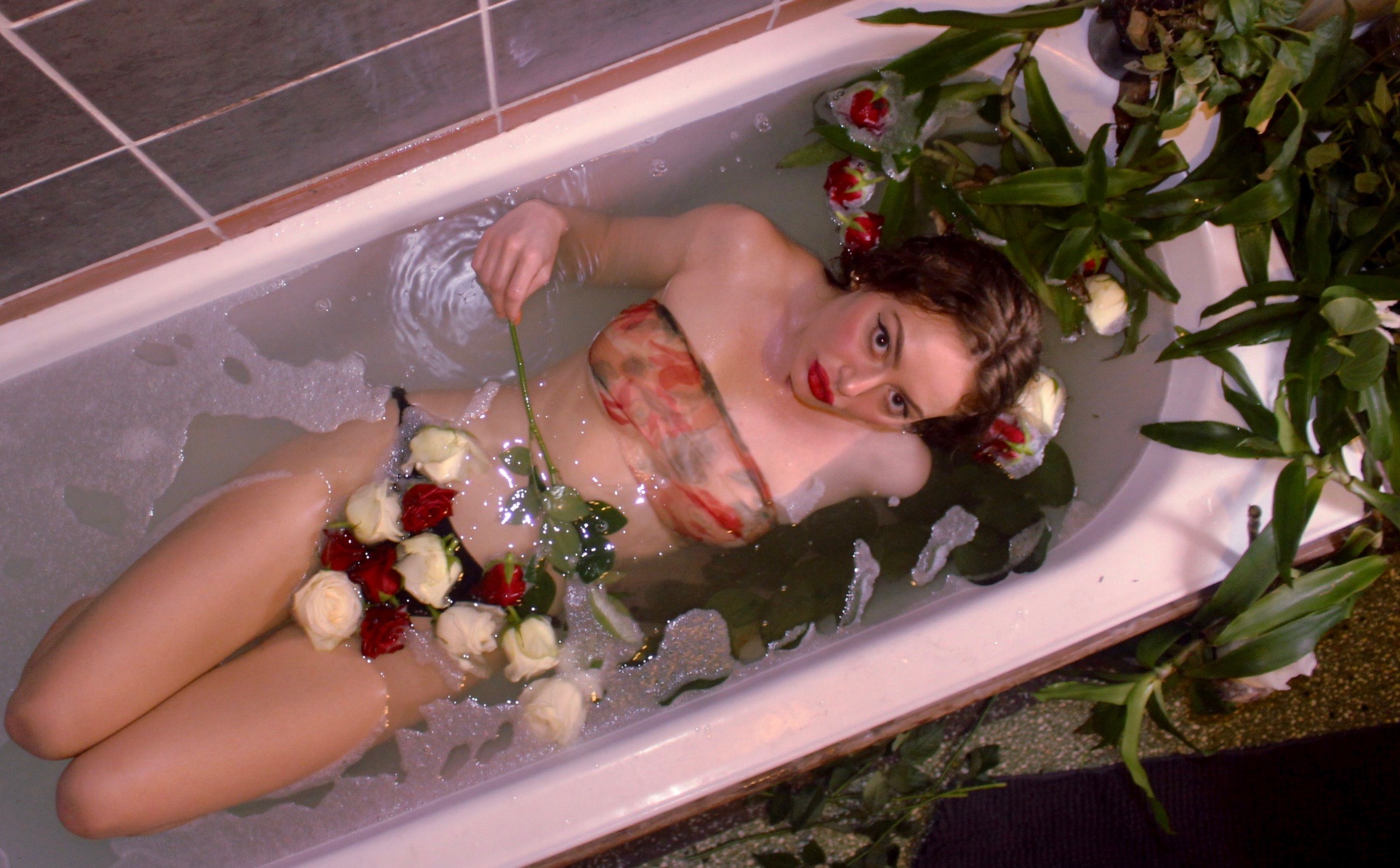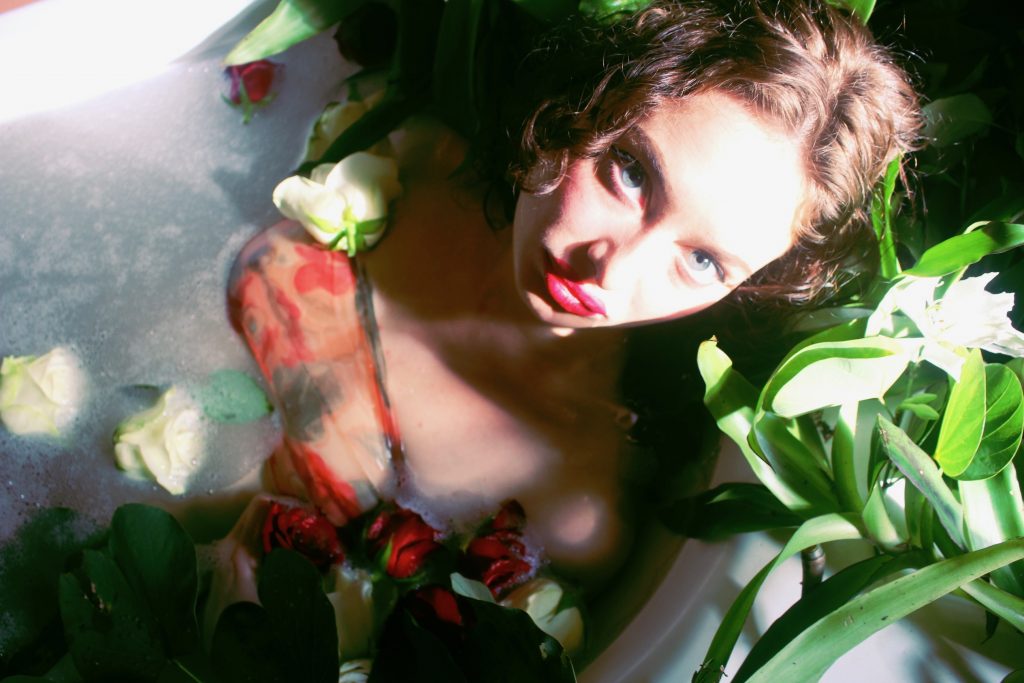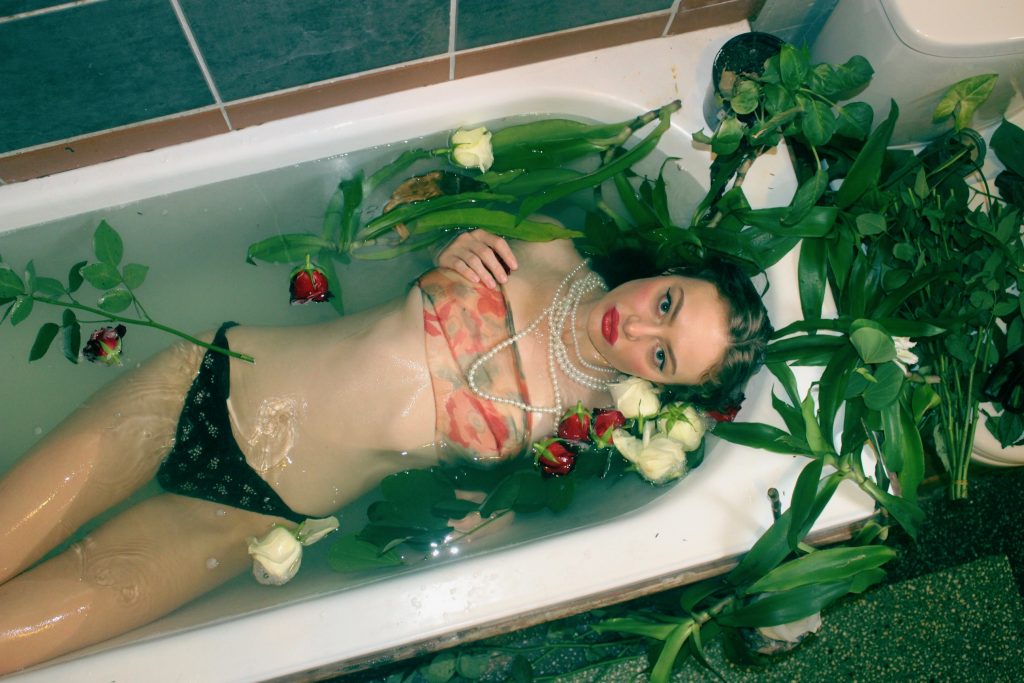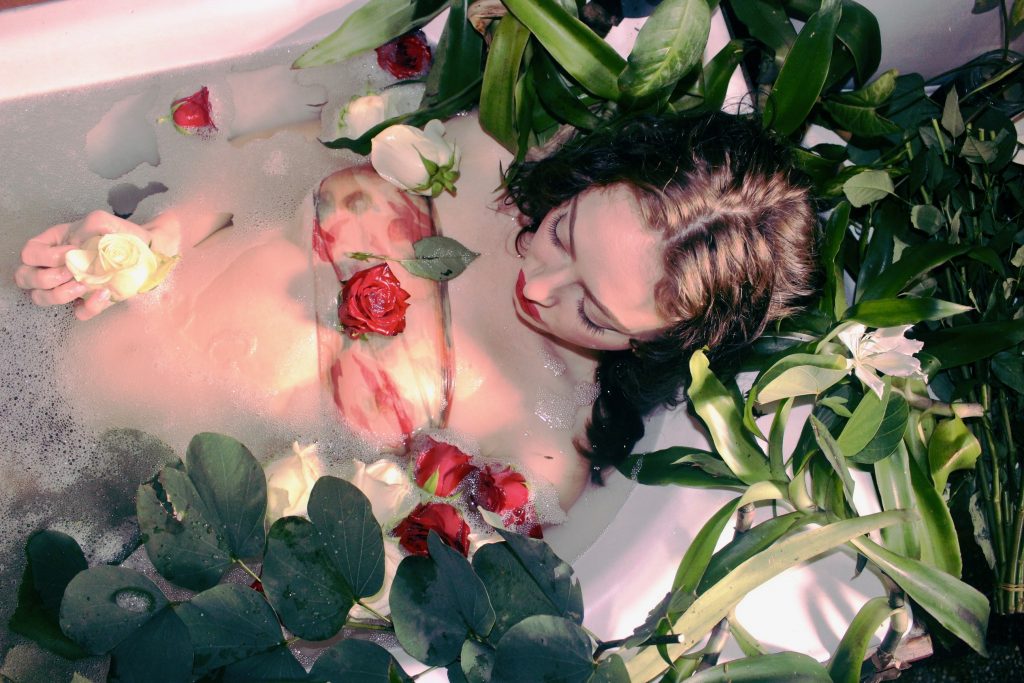
I LOST MY PUBES: An investigation into the missing pubic hair of Pre-Raphaelite women
Words: Faith Thurnwald
Model: Saskia Anderson
Photography: Faith Thurnwald
Where could they be: Why women all throughout art history seem to be decidedly lacking when it comes to their little lady garden.
Women have been removing their pubic hair for thousands of years, the practices itself can be dated as far back as ancient Egypt. Cleopatra probably sugared, and perhaps her infamous milk baths were a way to sooth those ever pesky, and ever present ingrown hairs – and perhaps not.
In Victorian society the removal of hair followed the fashion trends. As garments became shorter throughout the 20th century so too did the desire for smooth hairless skin, as it was readily visible.
However it wasn’t until the Brazilian hit the mainstream market in the 1980’s that for the first time (perhaps since Cleopatra?) the desire to be completely bare down there was considered normal and; like hair sticks to a wax strip, this trend has certainly stuck.
Evidently the controversy; to shave or not to shave is an ancient debate. Throughout history and in different cultures the attitudes towards bush vary, and so does the reasoning. Hair was removed for hygiene and social/sexual statues, but the most overwhelming reasoning rings true; it was removed for men. Enter the male gaze.
It’s no secret that the modern man doesn’t like grass on the field he wishes to plough. They don’t want to wonder into the secret garden, rather most men would prefer to explore a mowed lawn, or even better; a field completely bare of any evidence there was once vegetation there. Now, I know it’s #NotAllMen, but as with the existence of that hash tag, it’s irrelevant, because since the 1980’s we’ve been religiously trimming the bush, or rather ripping it out at its roots.


The Pre-Raphaelite women can be viewed as a positive representation of women in art history; they’re bodies seem refreshingly realistic. They’ve got bellies that bloat, cellulite, and a soft rolls, begging the question; but where are their pubes?
There is a definite dichotomy when it comes to the Pre-Raphaelite women: they exhibit strong features, but they’re painted on passive faces, they’re bodies are realistically flawed yet ultimately fallacious.
The Pre-Raphaelite women are hairless and sexless, I’m not only inclined to ask: where are their pubes, but also, where the hell are their labia’s. We’re a whole (no pun intended) lot more than just a little clit slit.
Are we as consumers forced to view the fetishisation of girlhood features on otherwise fully formed women? The Pre-Raphaelite women exhibit womanhood in all its marvelous glory, but then why are they missing the parts that actually make them women: why are they missing the very features that separate them from childhood?
In an art movement that is so refreshingly authentic why are we as avid consumers forced to view women with childlike parts. The Pre-Raphaelite movement was a radical group of artist who fought the rigid beauty standards, and social taboos of their time, but first and foremost they were realist. Which is why I eternally wonder, where are their pubes? In the Victorian era women had bush, so how realistic are the Pre-Raphaelites, really?
John Ruskin a benefactor and avid admirer of the Pre-Raphaelites was said to be disgusted by his wife’s pubes, so much so that he could never consummate the marriage. It is thought that he simply didn’t know that women had pubic hair. Imagine his surprise! In a famous letter to her father Effie (his wife) wrote:
‘he had imagined women were quite different to what he saw I was, and that the reason he did not make me his wife was because he was disgusted with my person the first evening’.
If the muses/models all fucked the Pre-Raphaelite brotherhood in an incestuous group orgy (kind of like an average Saturday night in your small home town) then certainly this proves that the women themselves were not accurately represented in the art. They had pubes. John Ruskin’s failed marriage is testament to this.
His ex wife went on to become Millas wife and, consequently his biggest muse. They had a shitload of children, so we know he didn’t mind a bit of bush. Good man.
And yet, I muse; if life imitates art why couldn’t John Ruskin simply get his wife to shave her pubes? Unfortunately women are all too familiar with mutating and manipulating their bodies for that of a males gaze.
I type this as my inner feminist screams at me. My razor sits wet, smug and probably rusting in the shower; waiting – like me – to be used again.
For More: ‘My God Is Thy Law’



0 comments